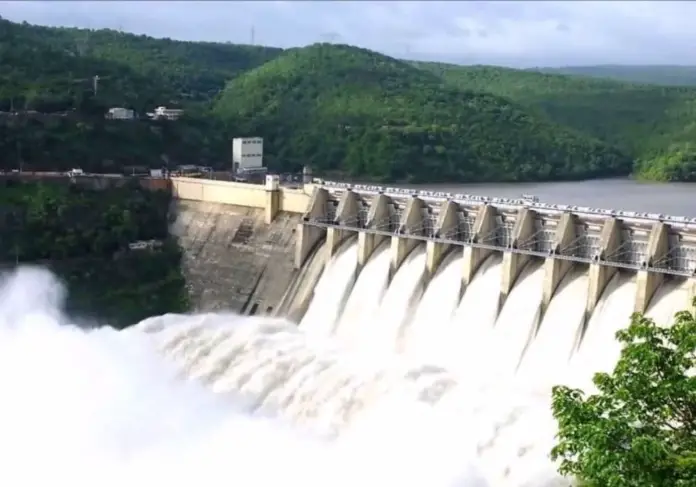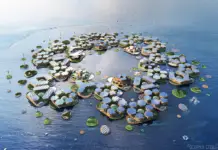In the last few days before the start of Monsoon, it was being heard from the WAPDA management that the water levels in our two major water reservoirs, Mangla and Tarbela, have reached extremely low levels. In the next few days, if the water does not reach these lakes due to melting of snow on the mountains or through rains, these reservoirs may go below their lowest levels. Thanks to Allah that before the worst situation arose, due to the increase in temperature in the last few days, the process of snow melting accelerated and these reservoirs started to increase their levels. Later, after few days, the monsoon rains also helped improve the situation but as soon as the monsoon started, the whole country is also facing a severe flood situation. We have been facing these two extreme situations every year since long. It happens that in the months of January to April, the water in our big dam reservoirs becomes very low, while in the months of June, July and August, severe flooding occurs due to substantial rains and melting of snow on the mountains.
Let us examine today what the main reasons behind such critical situations are and how they can be avoided in the future? In the period of water shortage, the production of hydroelectric power also decreases considerably and comes below 4000 megawatts while we can generate about 10,000 megawatts of hydroelectricity from our water reservoirs. Whereas during hot days i.e. from April onward, our electricity needs are also increased to over 30,000 MW. This is about 18,000 to 20,000 MW in normal days.
God has blessed us with a huge water basin in the form of Indus River and the system of rivers flowing into it. However, till date we have not been able to construct the projects to store this enormous treasure of water and use it as per our own needs throughout the year. The annual flow of the Indus River is about 243 cubic kilometers (58 cubic miles), which is almost twice the annual flow of the river Nile. The length of Indus River is about 3200 kilometers or 2000 miles. The Indus River originates from China and passes through the mountainous and plain areas of India and Pakistan and falls into the Arabian Sea.
Almost 75 years have passed since Pakistan came into existence, but till date we have been able to build only three big dams in the decades of 60s and 70s. These reservoirs are used for irrigation as well as for electricity generation. Among them, Warsak Dam was completed in 1960, which provides us with 240 MW of electricity. It also irrigates crops in a huge area of KPK. But now the water storage capacity of this dam has reduced by 90% because the dam reservoir is filled with stones and sand.
The second water storage project, Mangla Dam, was constructed on Jhelum river and this project was completed in 1967. Its total water storage capacity was about 7.4 million acre feet and it also provides us with 1150 MW of electricity. According to a UNDP report, its water storage capacity has been decreased by 33% and in the next few years its capacity will be reduced to half. The third major water storage project is Tarbela Dam. This project was completed in 1976. It was built near Swabi on the Indus River. Its total water storage capacity was about 11.1 million acre feet. This project provides us up to 5000 MW of electricity. According to the report of UNDP, its water storage capacity has also decreased by 32% and in the next few years, its capacity will be reduced to half.
After 1976, no big water storage project has been constructed in Pakistan and the water storage capacity of the existing projects has either finished or has reduced considerably. This is the reason why rains and floods cause disaster in Pakistan every year. According to WAPDA reports, after 1976, many big dam projects would have been built. Kala Bagh Dam was on the top of the list among those projects which would have been constructed after Tarbela Dam project during 80s and 90s.
Not only Kala Bagh, but also work on every water reservoir project was stopped. Major water storage projects included Kala Bagh Dam, Diamir Bhasha Dam, Dasu Dam, Mohmand Dam, Kalam Dam, Akori Dam etc which were to be built in the 80s, 90s and during the subsequent decades. If these projects would have been built as per the plan, we would have been able to store millions of acre-feet of water and generate up to 60,000 megawatts of cheap electricity. Moreover, our country would have been counted among the developed nations. Our industry would have been counted among the successful industries of the world. Our GDP would have been very high.
But no, we are an enemy of ourselves. We have not made such projects that could make us count among the developed nations. We have to face floods, disasters every year, billions of rupees have to be wasted on these damages, and thousands of lives have to be sacrificed but not to build such projects that can store this treasure of water given by nature to get unlimited benefits from it.
How long will it last? Now we must wake up as a nation. Our present and future governments have to think in this direction. More water storage projects should be started as soon as possible. Some work has been done on it in the last few years. Dasu Dam is being constructed on the Indus River in Kohistan area. Its water storage capacity is about 1.15 million acre feet and it will provide us with 4300 MW of electricity. Its construction started in 2017 and the project will be completed in 2026.
The second major project is the Diamir Bhasha Dam which is being constructed on the Indus River in the Diamir, Gilgit-Baltistan area. Its construction has started recently. Its water storage capacity is about 6.4 million acre feet. And it will also provide us with 4800 MW of electricity.
The third major project is Mohmand Dam, which is being constructed in Mohmand on Swat River. Its construction has also started recently. It will have a water storage capacity of about 1.3 million acre feet. It will provide us with 800 MW of electricity. Apart from these big projects, some small projects are also under construction.
Our governments must have to pay special attention to such projects. The construction of major dams which has already started should have to be accelerated to complete in time and more efforts are required to initiate new projects on Indus river and its tributaries.
Some small dams and barrages have also been proposed on the Chenab River and the Ravi River. The construction work should be started on them as well so that whenever India releases extra water towards Pakistan, we can store it and use it as per our own needs. We should not continue every year to suffer in form of lives and financial losses from flooding water during Monsoon season while on the other hand facing extreme shortages of water during the period from January to April before the start of monsoon.







